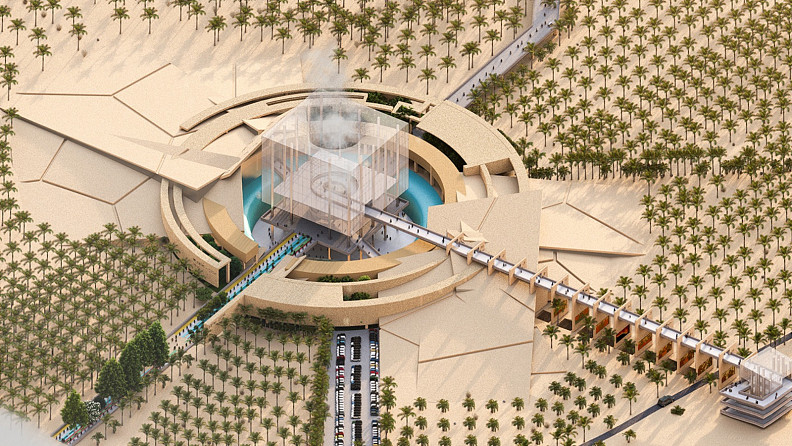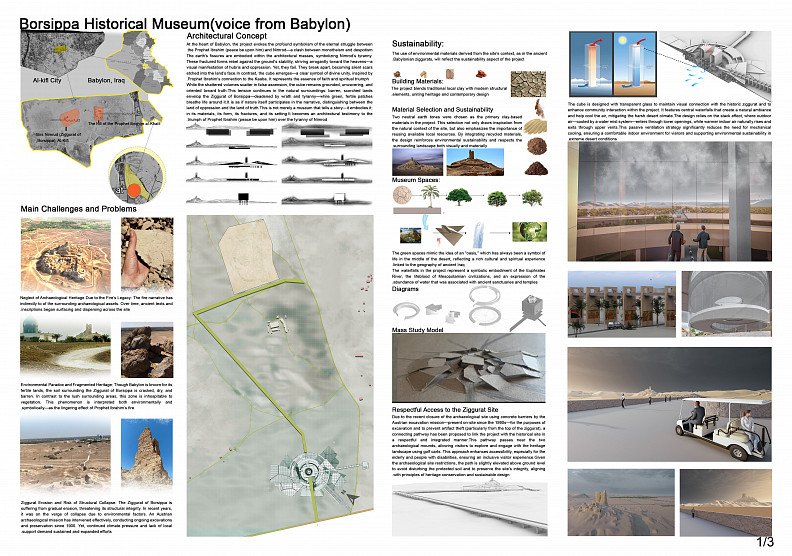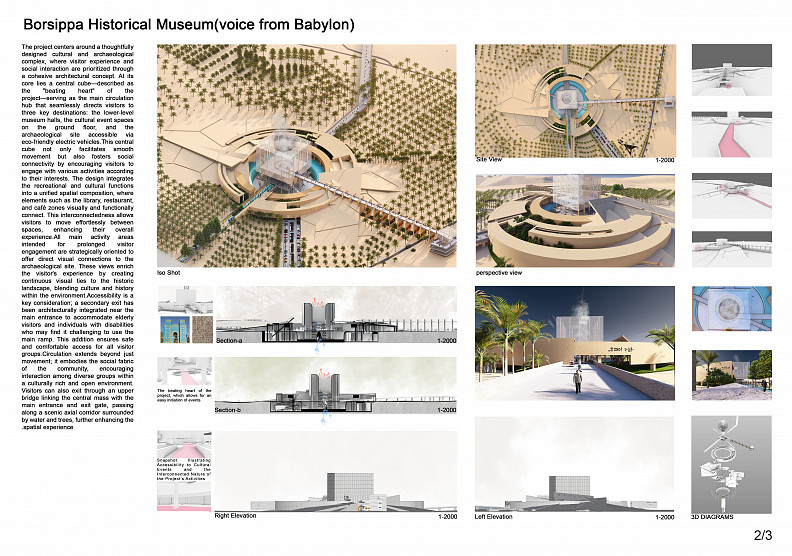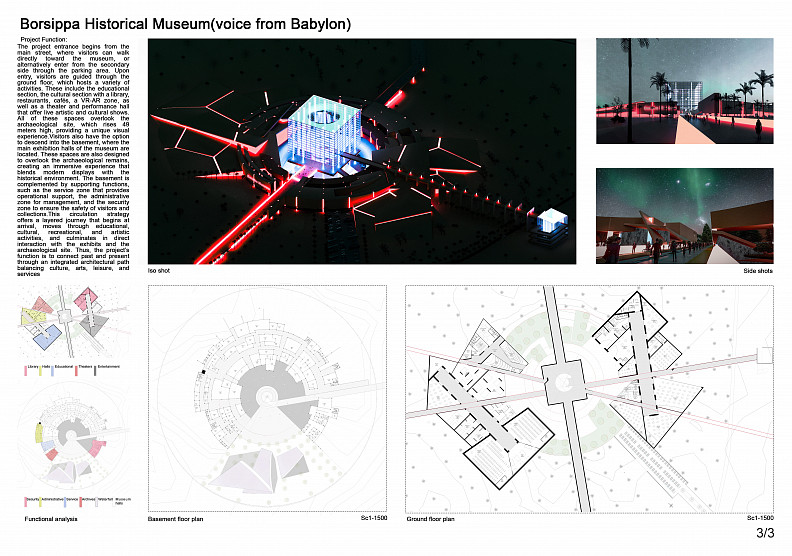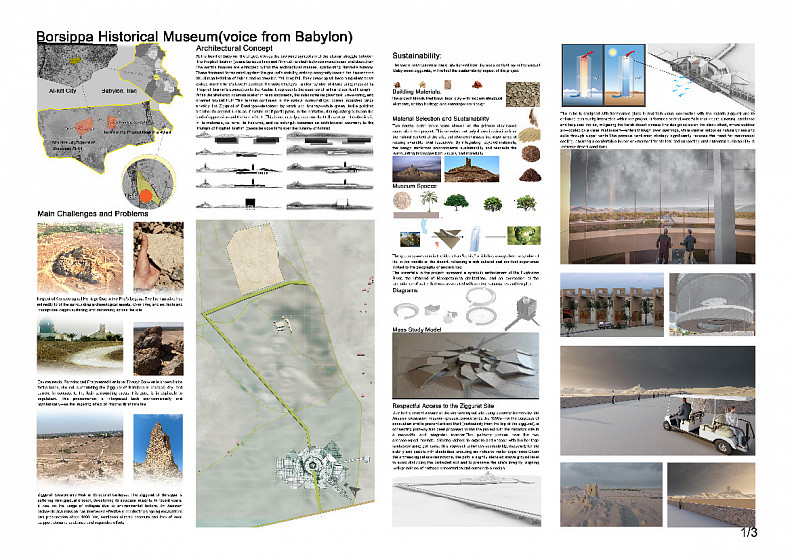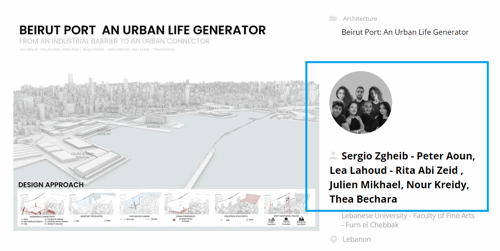Borsippa Historical Museum
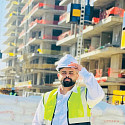
Project idea
The project is inspired by the symbolic confrontation between Prophet Abraham (peace be upon him) and King Nimrod — a timeless conflict between monotheism and tyranny. The fragmented architectural forms express arrogance and collapse, while the solid cube embodies unity and faith, drawing inspiration from Abraham’s connection to the Kaaba. The architecture emerges organically from the desert ground, symbolizing rebirth, humility, and harmony with nature.
Project description
Located in Babylon–Borsippa, the project integrates spirituality, sustainability, and heritage preservation. The transparent cube maintains a visual connection with the two archaeological mounds, allowing visitors to experience the historic landscape without obstruction. Recycled local materials reduce environmental impact and help moderate the harsh desert climate through passive design strategies, including the Stack Effect for natural ventilation.
A lightweight elevated pathway leads visitors toward the mounds while protecting the archaeological soil. Designed for electric golf carts, it provides accessibility for all while preventing direct contact with the terrain. The project offers a respectful, balanced approach—preserving the sanctity of the site and enhancing visitors’ engagement with its profound spiritual and historical narrative.
Technical information
The project’s main entrance originates from the western side, guiding visitors along a shaded palm-lined path that visually connects them to the neglected Ziggurat of Borsippa. A secondary access route extends through an elevated bridge, offering a panoramic experience and protecting the archaeological soil from direct contact.
At the intersection point lies the transparent cube — a spatial and symbolic heart of the museum — where visitors can either descend into the underground museum or move toward the ground-floor cultural and recreational spaces.
The blue tones marking the descent to the museum are inspired by ancient Babylonian symbolism, referencing the historical use of glazed blue tiles. The project employs locally sourced materials identical to those of the ziggurat, ensuring both sustainability and cultural continuity.
The design integrates natural ventilation through the Stack Effect within the central cube, reducing heat and improving comfort in the harsh desert environment. The palm fields surrounding the project visually and experientially recall the historical landscape of Babylon’s “Land of Black Soil,” reinforcing the site’s ecological and cultural authenticity.
